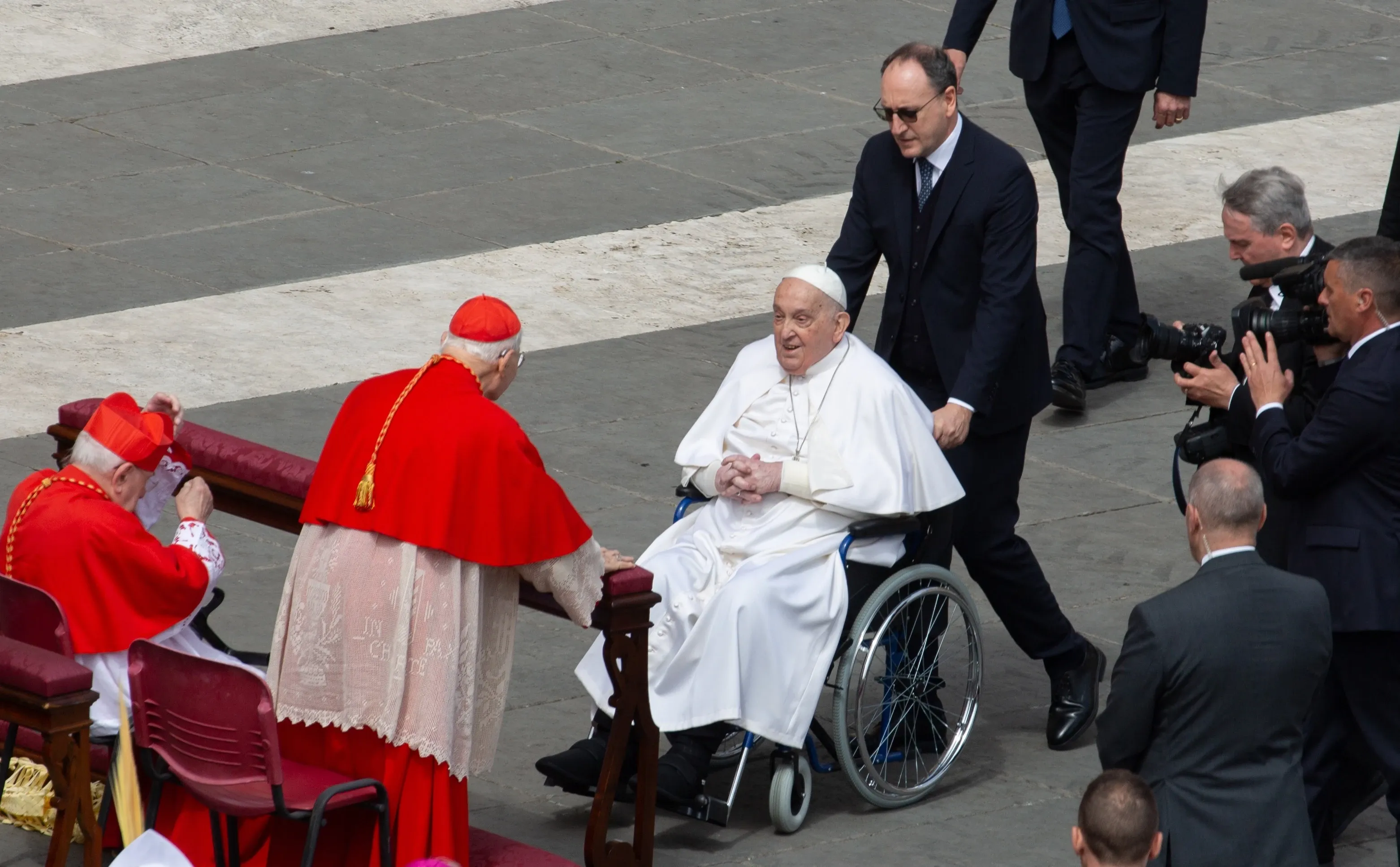“One of the prevailing characteristics of the spirituality that emerges from the messages is that of trust in God through a total trust in Mary, in order to become instruments of peace in the world,” the Vatican’s document says.
The note quotes from some of the messages to illustrate that in the missives, “Our Lady does not place herself at the center but shows herself to be fully directed toward our union with God.”
The spirituality of the messages is also one of communion with the pope and with the whole Church, it said, and the spirituality of Medjugorje is overall “joyful, celebratory, and includes a call to live the joy of following Christ.”
During Thursday’s press conference, Fernández quoted from several of the alleged messages he found to be edifying.
“Most of the messages have a beautiful content that can stimulate the faithful to conversion, to grow in their encounter with Christ, to be peacemakers in the world,” he said.
(Story continues below)
‘Misleading messages’
The report also notes that as in other spiritual experiences and alleged supernatural phenomena, “positive and edifying elements are mixed with other elements that are to be ignored,” adding: “But this fact should not lead one to spurn the richness and the good of the Medjugorje proposal as a whole.”
The report draws attention to a number of “misleading messages” from Mary, particularly when she reprimands or makes threats, or when she insists strongly on listening to her messages: “This risks creating a dependence and an excessive expectation on the part of the faithful, which could ultimately obscure the central importance of the revealed word.”
The note said this becomes “even more problematic” when the messages give orders about specific dates, places, and practical decisions “unlikely to be of supernatural origin.”
“Although messages of this type are infrequent in Medjugorje, we can find some of them that are explained solely from the personal desires of the alleged visionaries,” the note said. “It is reasonable for the faithful, using prudence and common sense, not to take these details seriously nor heed them.”
The dicastery also said “those messages that attribute to Our Lady the expressions ’my plan’ or ‘my project’ also show a certain problematic aspect,” and these expressions “might create some confusion” because “in reality, everything Mary accomplishes is always at the service of the Lord’s plan and his divine plan of salvation.”
Another term requiring special attention is “the possible misuse of the word ‘mediatrix’ in reference to Mary” in the messages.
When the messages say “I am the mediatrix between you and God” (July 17, 1986) and “I desire to be the link between you and the Heavenly Father, your mediatrix” (March 18 2012), they “fail to express adequately the fact that, as St. John Paul II explained, Mary’s mediatory cooperation is ‘subordinate’ to the mediation of Christ,” the note explained.
The DDF said Archbishop Aldo Cavalli, special apostolic visitor to the parish community of Medjugorje, will continue the duties already entrusted to him and will be responsible for authorizing the publication of any future messages.
The dicastery advised people who may visit Medjugorje that pilgrimages should not be made to meet with alleged visionaries but to have an encounter with Mary, Queen of Peace and with her son, Jesus Christ, through participation in the sacraments.
Some of the alleged messages of Mary the Vatican found problematic were those containing explicit and repeated exhortations to the parishioners of the local church, St. James, the Vatican said.
Those messages are “an understandable expression of the alleged visionaries’ intense love for their parish community,” the note said. “However, Our Lady’s messages cannot replace the ordinary role of the parish priest, the pastoral council, and the synodal work of the community regarding decisions that are the subject of communal discernment, through which the parish matures in prudence, fraternal listening, respect for others, and dialogue.”
‘Nihil obstat’
In accordance with new norms on the discernment of “alleged supernatural phenomena,” the local bishop must consult and receive final approval from the Vatican after investigating and judging alleged apparitions and connected devotions.
According to the May 17 norms, a “nihil obstat” judgment means: “Without expressing any certainty about the supernatural authenticity of the phenomenon itself, many signs of the action of the Holy Spirit are acknowledged ‘in the midst’ of a given spiritual experience, and no aspects that are particularly critical or risky have been detected, at least so far.”
In its Sept. 19 note, the DDF explained that “through the ‘nihil obstat’ about a spiritual event, the faithful ‘are authorized to give it their adherence in a prudent manner’ (Norms, art. 22, §1; cf. Benedict XVI, Verbum Domini, par. 14).”
“While this does not imply a declaration of the supernatural character of the phenomenon in question (cf. Norms, art. 22, §2) — and recalling that the faithful are not obliged to believe in it — the nihil obstat indicates that the faithful can receive a positive encouragement for their Christian life through this spiritual proposal, and it authorizes public acts of devotion,” the dicastery continued.
“Such a determination is possible,” it said, “insofar as many positive fruits have been noted in the midst of a spiritual experience, while negative and dangerous effects have not spread among the people of God.”
Hannah Brockhaus is Catholic News Agency's senior Rome correspondent. She grew up in Omaha, Nebraska, and has a degree in English from Truman State University in Missouri.









